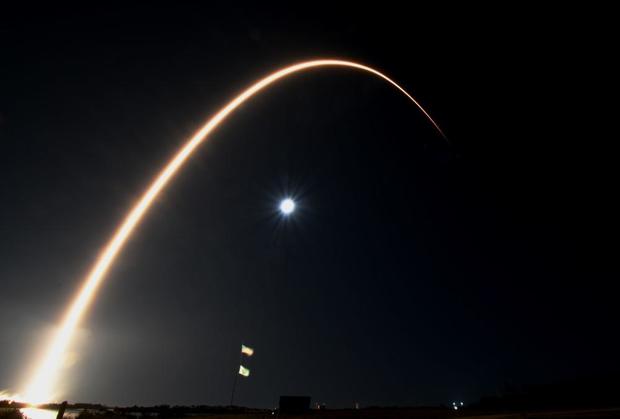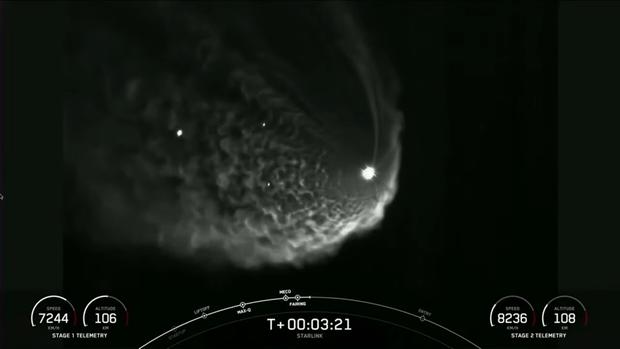SpaceX fires off 49 more Starlinks in rapid-fire launch sequence
Keeping up a rapid-fire launch pace, SpaceX fired off its third Falcon 9 of the year Tuesday, boosting another 49 Starlink internet satellites into orbit as the company continues building out a globe-spanning network of commercial broadband relay stations.
The Falcon 9, using a first stage making its 10th flight, thundered to life and climbed away from historic pad 39A at the Kennedy Space Center at 9:02 p.m. ET, arcing over a full moon as it headed out on a southeasterly trajectory tilted 53 degrees to the equator.

After boosting the rocket out of the lower atmosphere, the first stage fell away and flew itself back to landing on an off-shore droneship. It was SpaceX's 103rd successful recovery and its 79th at sea.
The second stage slipped into its planned orbit a few seconds later and all 49 Starlinks were released to fly on their own a few minutes after that.

The launching was the third so far this year for SpaceX, following another Starlink flight January 6 and a "rideshare" mission January 13 that put 105 small satellites in orbit.
Going into Tuesday's flight, SpaceX had launched 1,993 Starlinks, of which 1,741 were thought to be functional. The company has regulatory approval to launch more than 12,000 Starlinks to provide space-based commercial internet access to customers anywhere in the world.
- In:
- SpaceX

Bill Harwood has been covering the U.S. space program full-time since 1984, first as Cape Canaveral bureau chief for United Press International and now as a consultant for CBS News. He covered 129 space shuttle missions, every interplanetary flight since Voyager 2's flyby of Neptune and scores of commercial and military launches. Based at the Kennedy Space Center in Florida, Harwood is a devoted amateur astronomer and co-author of "Comm Check: The Final Flight of Shuttle Columbia."
TwitterDisclaimer: The copyright of this article belongs to the original author. Reposting this article is solely for the purpose of information dissemination and does not constitute any investment advice. If there is any infringement, please contact us immediately. We will make corrections or deletions as necessary. Thank you.







